Healing Is In Session
Author: Emily Munoz
I’ve had a song in my head since last November. It’s an old Van Morrison song that stays for a week or so, then floats away — until it comes back again some days later, always nudging me with the same line, “…and the healing has begun.” It just will not let me go.
Usually, when I have a prolonged earworm like that, there’s a reason — or at least a trigger. Sometimes it’s a musical phrase (there was a commercial for a ski resort in Massachusetts that had the same several-note pattern as The Doobie Brothers' song, “Listen to the Music,” which plagued me for an entire winter). Sometimes there’s something deeper — like the summer I had “Killing Me Softly” in my head for weeks when I needed to change the dynamics in a relationship. This time, the melody and lyrics to this old Van Morrison song keep coming to me because, I suspect, I’m increasingly called to interrogate it. What kind of healing, exactly, has started, Mr. Morrison? What did it take to begin it? How did you know it was happening? Is it still?
Let’s be clear, Van’s lyrics do not get that deep — there wasn’t even a strange internet theory about a deeper meaning to be found (a complete anomaly). The only unsourced, unsubstantiated statement I found was this: “Well, it’s about healing, isn’t it?”
Understanding Healing
So it seems, these lyrics are nothing but a strangely comforting refrain framing my persistent chorus of questions: If healing is painful, how do we know it’s right, or if it’s working? Do we have to “stop the bleeding” before we can start to heal and, if so, what does that mean for grief, which feels like being constantly reinjured? Is it wrong to even expect healing from grief?
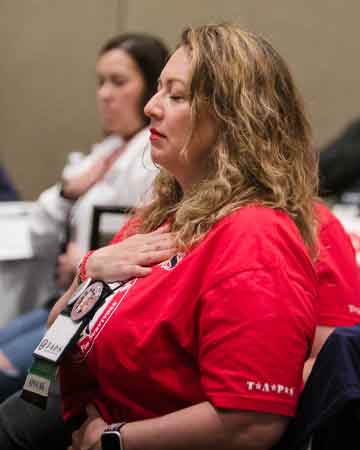
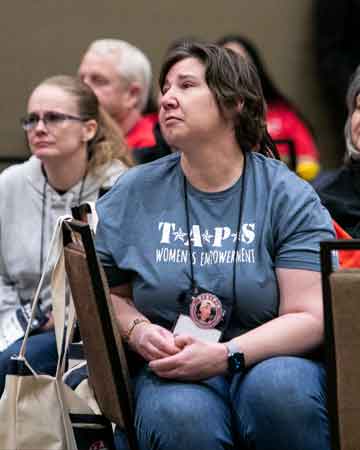
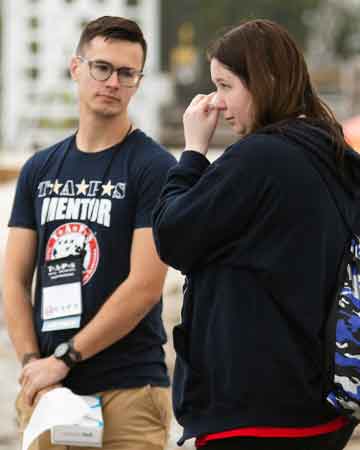
After all, grief isn’t a disease or a disorder. It’s a normal, healthy, required process. But, it’s painful, so we associate it with a need for healing — maybe because it hurts so much or because it affects our ability to function in the world.
Maybe we default to the term, healing, because we know something needs to be addressed. Our pain and discomfort are sending us a message — a sort of check engine light — that it may not be safe or wise to ignore.
Though many of us might admit to ignoring that check engine light as long as possible, we know we need to tend to it. And, so it is with grief — we have not only an imperative to heal, but an imperative to help others heal. Mentally, physically, and emotionally, for survival, we are wired for both attachment and repair. Investment in our own healing, and that of others, is part of how we form connections — it’s part of human evolutionary psychology. It’s not easy, and it’s not always comfortable. Jeanne Achterberg, a pioneer in psychology and alternative medicine, sums it up: “Healing is embracing what is most feared; healing is opening what has been closed, softening what has hardened into obstruction, healing is learning to trust life.”
Healing Is Learning
Early in my grief, I was reading a book on basic neuroscience and, somewhere in the chapter on how we acquire knowledge and skills, it clicked for me: My brain was desperately trying to learn a new reality. Isn’t it true that books go much quicker when you read them a second time; movies seem to become shorter; tasks that once required so much mental effort become easier with repetition and practice.
In many ways, we “practice” our relationships with our loved ones the entire time they’re in our lives. Our brains keep track of these important relationships very closely along three dimensions based on space, time, and the depth of the connection. In fact, in the human brain, a large number of neurons have been dedicated to this process — to creating neural maps that reassure us, provide context for our lives with the people we love, and to help us learn routines.
If you’ve seen the movie 50 First Dates, this will make sense almost immediately. The main character, having suffered a traumatic brain injury, has no long-term memory. For her, every day is a completely new day. She must relearn the circumstances of her life for the first time every morning with no frame of reference. She cannot establish the brain patterns that help life flow more easily — with fewer shocking surprises, less uncertainty, and more context for what to expect. She doesn’t have the rich neural maps of predictable routines, recognizable presences, and familiar feels — without them, she must repeatedly relearn her post-accident life from the ground up.
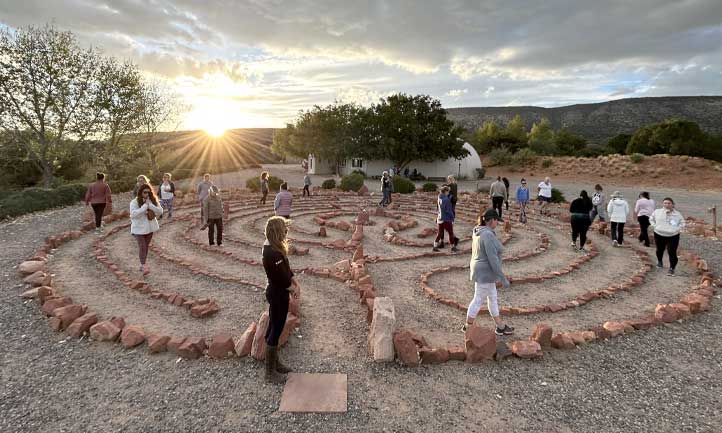
Death doesn’t erase neural maps. They still exist, and this is why life in the wake of loss is, in many ways, a drastic rewiring process. The machinery dedicated to keeping track of our relationships keeps going. The GPS keeps telling us where to go, but the maps are out of date.
Our brains are struggling to make sense of where we are and where we’re going, and a tremendous amount of machinery has been dedicated to these processes. We can’t just download an update, though — we must create new maps. It’s a painful, painstaking process of rewiring. We must learn by going where we need to go and creating a path where there is none.
Mary Frances O’Connor explains in her book, The Grieving Brain: The Surprising Science of How We Learn from Love and Loss:
“[G]rief is a heart-wrenchingly painful problem for the brain to solve, and grieving necessitates learning to live in the world with the absence of someone you love deeply, who is ingrained in your understanding of the world. This means that for the brain, your loved one is simultaneously gone and also everlasting, and you are walking through two worlds at the same time.”
At a basic level, Mary says, we are reprogramming every aspect of daily life that involved our deceased loved ones. In the broadest sense, though, we are learning how to restore and redefine meaning, context, and identity.
We are all, then, reluctant students of life after loss. While this learning process seems daunting and exhausting, there are several profoundly comforting points here. First, our loved ones are permanently encoded in the very basis of who we are, how we think, and what we feel. In this way, they are eternal. This is independent of any of our own actions. So, relax. You will never outgrow them, forget about them, or have to work to keep them present. This is what makes this learning process so difficult — we can’t drive it, control it, rush it, or “work ahead.” But the same processes that helped us make our loved ones a part of our lives will help us create lives with them still in it, just differently.
Second, we are invited to throw out the old maps and discard outmoded measures. We can release any standards that focus on returns to “before” because there is no need. You are carrying forward the person you are, all the versions of who you were, and all the versions of your loved one that you knew with you in your most basic human wiring. Adapting to life in a changed world is a learning process, not a returning process.
As Megan Devine, author of It's OK That You're Not OK: Meeting Grief and Loss in a Culture That Doesn't Understand, asked her Instagram followers, “What if healing isn’t about being fixed; what if it’s about integration? What if healing means being witnessed for the reality of your situation?”
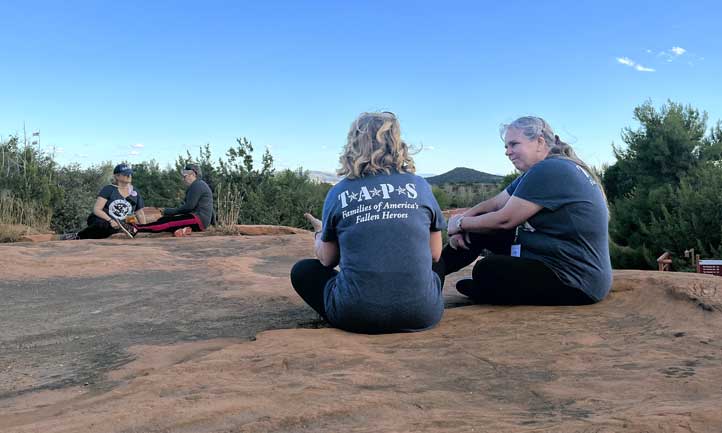
And that’s why we’re here, doing it together. We are all students of love; we are all also students of grief. With the right social supports (ahem, #TAPSFAM), we can be who we have been and who we’re becoming without the pressure to reconcile these things immediately. Together, we know that we can remember the love (in fact, we are physiologically unable to forget it), celebrate the enduring connections we have with our loved ones, and share the journey as we learn to integrate ourselves, our people, our aches, and the songs and loves that won’t us let go.
“And we’ll walk down the avenue again
And we’ll sing all the songs from way back when, yeah
And we’ll walk down the avenue again and the healing has begun
— Van Morrison
Register for Upcoming Webinars
Turn to the TAPS Institute for Hope and Healing® to get to know your grief and gain strength for your journey towards healing. Register for an upcoming webinar or browse the archives for courses that fit your needs.
Emily Muñoz is the Program Innovation Director at TAPS. She brings fresh concepts to the Survivor Care Team and supports the Programs Committee, facilitating activities that offer a healthy, active path toward healing. Emily came to TAPS following the death of her husband in 2005.
Photos: TAPS Archives
